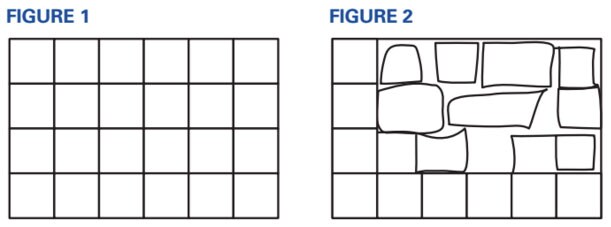
Foreword
Numeracy. For many people, that’s another name for “mathematics.” Many people commonly assume that mathematics, especially early mathematics, is about counting and arithmetic. From this perspective, measurement, geometry, and graphing are minor parts of the curriculum, often left to the end of the year when little time is available to spend on them. Does that lack of exposure really hurt children? Are those topics truly important?
In a word, yes. In this well-written book, Joan Moss, Cathy Bruce, Bev Caswell, Tara Flynn, and Zack Hawes show clearly that spatial reasoning is critically important, that geometry is more than naming shapes, and that learning number and arithmetic by way of shape and space has substantial advantages.
To their credit, in Part I of Taking Shape, the authors take readers inside the processes of spatial reasoning. They give clear explanations and include just enough research to support why and how the processes are important to mathematics and subjects beyond mathematics. Perhaps most important, they provide concrete examples that illustrate the spatial reasoning processes and how children might learn pertinent skills.
The authors show that spatial reasoning contributes to math- ematical ability. This observation is significant: spatial reasoning is a process that is distinct from other types of thinking, such as verbal reasoning (Shepard & Cooper, 1982); it also functions in distinct areas of the brain (Newcombe & Huttenlocher, 2000; O’Keefe & Nadel, 1978). And, as the authors point out, mathematics achievement is related to spatial abilities (Ansari et al., 2003; Fennema& Sherman, 1978; Guay & McDaniel, 1977; Lean & Clements, 1981; Stewart, Leeson, & Wright, 1997; Wheatley, 1990). Further, important equity issues are at play here. We know, for example, that girls, certain other groups that are under-represented in mathematics, and some individuals are harmed in their progression in mathematics due to lack of attention to spatial skills; they would benefit from more geometry and spatial skills education (see, for example, Casey & Erkut, 2005)
However, the relationship between spatial thinking and mathematics is not straightforward, and this book makes it clear which types of spatial thinking the authors want children to develop. For example, some research indicates that students who process mathematical information by verbal-logical means outperform students who process information visually (Clements & Battista, 1992; Sarama & Clements, 2009a). Clearly, the types of spatial competencies matter. Students in those studies “who process information visually” are relying on primitive processes, such as “seeing” surface features of problems (which, in the book, are called “pictorial representations”). Instead, the authors help students develop spatial reasoning in order to develop “visual-schematic representations” in two major types: spatial orientation and spatial visualization (Bishop, 1980; Harris, 1981; McGee, 1979). This kind of high-quality education helps children move beyond simple surface-level visual thinking as they learn to manipulate dynamic images, as they enrich their store of images for shapes, and as they connect their spatial knowledge to verbal, analytic knowledge.
Skeptics might think: “Really? You need spatial knowledge beyond what all children know to solve problems in arithmetic and algebra?” The answer is yes. Consider the research that Julie Sarama and I have done on elementary students’ knowledge of area (Clements & Sarama, 2014; Sarama & Clements, 2009a). Students are often asked to count the number of squares to figure out the area of a region, as shown in Figure 1, below. They learn to use a formula, A = L × W. Later, however, many students forget which formula is for area and which is for perimeter. Or, when asked to explain why 4 × 6 “works” to find the area, they do not know. Why? Although adults may understand the rows and columns in Figure 1, many students do not. Asked to simply copy Figure 1, many students, even intermediate students, draw images such as that in Figure 2. Some learners do not understand the spatial structure of even simple arrays.

How then should we help children develop such spatial reasoning? Part II of Taking Shapeshows how. It provides well-organized, developmentally appropriate, and engaging sets of activities that address the five particular aspects of geometry that the authors identified in Part I.
Number and operations may be the most important focus of early mathematics (National Research Council, 2009), but we ignore ngeometry and spatial reasoning at our peril. These subjects are critical in and of themselves. Just as important, however, is this finding: children will not learn number and operations, which includes solving problemsn involving these topics, well unless they also learn spatial reasoning.
Douglas H. Clements
